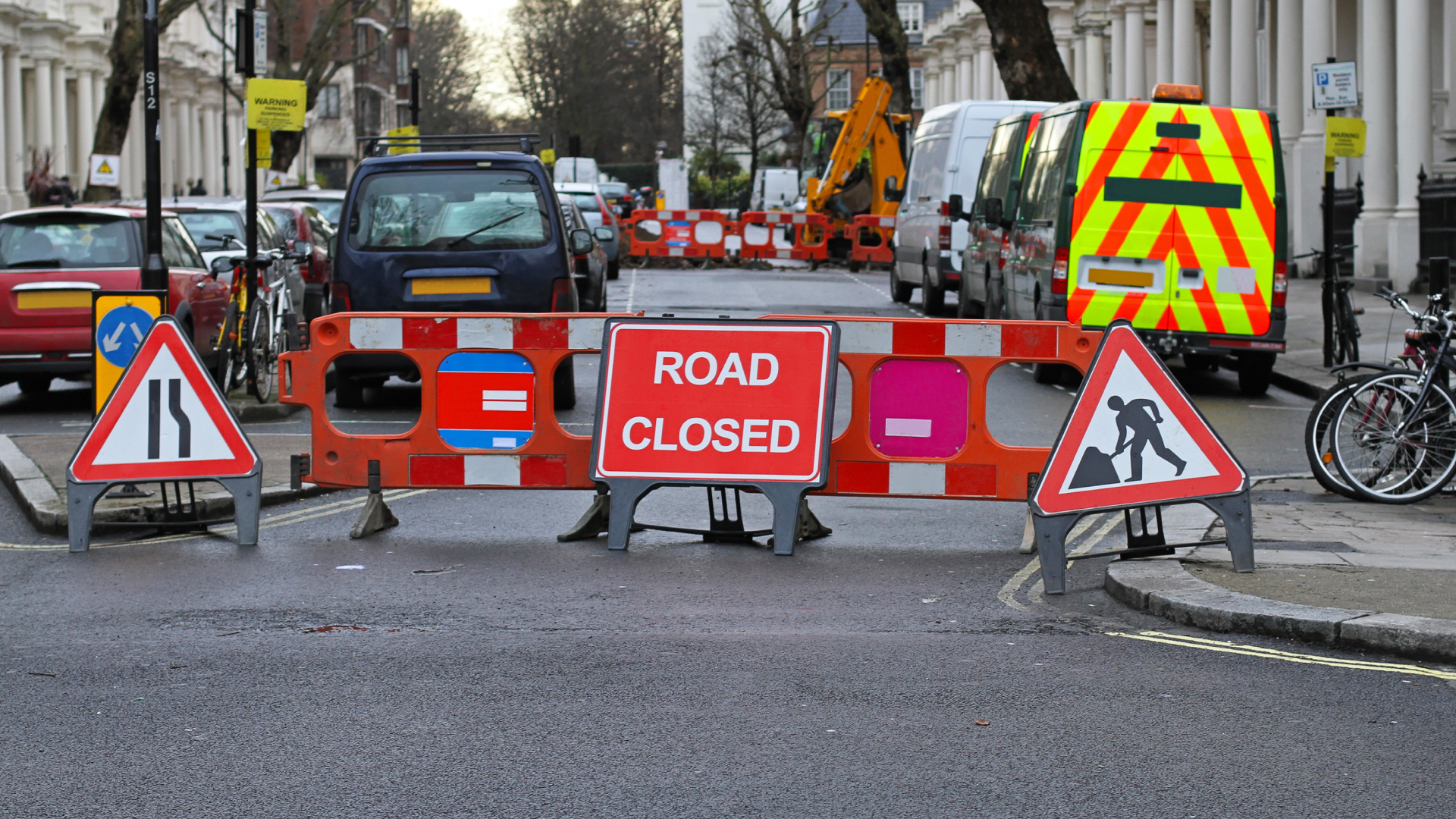
The UK’s Most Complained-About Streets
A cracked pavement, a broken streetlight, or continual dog-fouling in your area might do more than just ruin your morning. It can also affect what buyers are willing to pay for your home.
Sell House Fast’s analysis of reports submitted to FixMyStreet reveals where residents are most frequently flagging local problems and what this could mean for the housing market.
If your property is in an area with more street faults than average, cash house buyers can be an effective option for sellers. These sales often move fast, and buyers may be more willing to take on properties in their current state, removing the uncertainty that prolonged, repair-heavy sales can create.
We used complaint volumes from FixMyStreet (the citizen-facing platform that sends reports to councils), from when it launched in 2007 to today. We matched them to the August 2025 average house prices to see how broken streets can affect buyers’ perceptions of a property.
Key findings
- Bromley tops the list for overall FixMyStreet complaints per capita, despite relatively high house prices. This reflects high reporting activity or persistent local issues.
- Westminster appears repeatedly in problem categories (dog fouling, pavements, and street lighting), showing that even high-value central areas suffer from visible public faults.
- Greenwich ranks highly for complaints about parks/landscapes and abandoned vehicles. Parks and derelict cars are recurring detractors from buyer perception.
- Among the top 10, average house prices range from £249,562 (Isle of Wight) to £921,419 (Westminster), showing that street neglect affects postcodes across all price bands.
Note: Local reporting levels reflect public awareness and the popularity of reporting tools, not an exact measure of total incidents. Where councils actively promote reporting (or use FixMyStreet Pro), the volume of complaints is likely to be higher.
Councils receiving the most complaints

This ranking reflects complaints submitted via FixMyStreet, not the total number of issues handled by councils.
The number of residents using the platform undoubtedly varies with local awareness and adoption. However, this provides a snapshot of the complaints each local authority council is facing.
| Rank | Local authority | Average house price (August 2025) | Complaints per 100,000 people |
| 1 | Bromley | £531,139 | 108,954 |
| 2 | Westminster | £921,419 | 81,745 |
| 3 | Hounslow | £554,551 | 74,719 |
| 4 | Isle of Wight | £249,562 | 74,372 |
| 5 | Bath and North East Somerset | £415,832 | 61,611 |
| 6 | Buckinghamshire | £478,466 | 57,969 |
| 7 | Merton | £633,514 | 52,599 |
| 8 | Brent | £560,535 | 52,517 |
| 9 | Bexley | £412,151 | 42,455 |
| 10 | Cheshire East | £302,009 | 41,227 |
Bromley is the UK’s most compained-about area
Bromley residents submit more FixMyStreet complaints than any other local authority, with nearly 109,000 reports per 100,000 people. This is 2,000% higher than the national average, making them 20 times more likely to report street quality issues.
The borough’s most common complaints relate to street cleaning (13,000+) and fly-tipping (7,000+), suggesting persistent maintenance challenges across Bromley’s vast suburban network.
As one of the earliest adopters of FixMyStreet Pro, Bromley Council makes it easy for residents to report faults, which partly explains the high figures, but also highlights growing local awareness.¹
Bromley’s extensive public spaces pose a significant upkeep challenge. The borough manages over 300 miles of roads and 160 parks and open spaces, giving it one of the largest green footprints in London.²
More practically, the types of issues most frequently reported are the same ones buyers immediately notice during viewings. Even small, visible faults can suggest that local services are overstretched.
For home sellers, the visibility of issues can work against them. Buyers tend to notice overflowing bins, cracked pavements, and fly-tipping before they ever step inside a property. Even minor local issues can influence a buyer’s first impression, especially in commuter areas where convenience and tidiness are key factors in the appeal.
“High complaint volumes in Bromley aren’t just a sign of neglect; they show how engaged residents are,” says Jack Malnick of Sell House Fast.
“But from a buyer’s perspective, visible street faults can still dent kerb appeal and raise questions about council responsiveness.”
Westminster City Council faces many complaints
Westminster ranks second in the UK for FixMyStreet complaints per capita (82,000 per 100,000 people), despite having the highest average house price in the top 10 (£921,419). Residents are around 16 times more likely to report issues than the national average.
Its central London location, with millions of visitors and numerous offices, embassies, and historic sites, contributes to street wear and tear.
Fixmystreet data shows over 4,000 complaints for street lighting, nearly 2,000 for pavements, and more than 2,000 for dog fouling per 100,000 people. This high volume indicates visible and reported issues, actively encouraged by Westminster Council’s ‘Report It’ portal.³
Hounslow is one of the most complained-about areas on FixMyStreet
Hounslow ranks third in England for the number of complaints submitted to FixMyStreet, with almost 75,000 per 100,000 people. Residents are roughly 15 times more likely to report problems than the national average. This represents issues experienced by residents and a population that is active in online reporting.
The borough is situated between central London and Heathrow Airport, meaning its roads and public spaces are constantly congested with heavy traffic.
Hounslow frequently reports fly-tipping, blocked drains, and damaged pavements, issues common in areas with high traffic and dense housing. Following public feedback, the council announced significant investment in road resurfacing and pavement replacement.⁴
Despite issues, Hounslow’s average house price is £554,551, indicating strong demand likely due to its excellent transport links, proximity to Crossrail, and close proximity to Heathrow.
Westminster has the most dog fouling complaints of any UK council
Dog fouling ranks as one of Westminster’s most common grievances on FixMyStreet. According to the council’s ‘Responsible Dog Ownership’ campaign and ‘Stamp out Dog Fouling’ action, the problem is particularly bad in areas where footfall is high and public bins are limited.⁵ ⁶
For residents and buyers, visible waste has a direct impact on neighbourhood appeal. Families and those with young children are especially likely to be deterred by unclean pavements. In high-value postcodes like Westminster, even small lapses in cleanliness can harm the area’s image, and, by extension, property desirability.
Greenwich has more green space complaints than any other council

Greenwich parks, though beloved, face significant complaints regarding litter, damaged paths, and vandalism, especially in Greenwich Park and Charlton Park, according to FixMyStreet data.
The increased population and tourism strain these public spaces, alongside Greenwich Council’s promotion of FixMyStreet, resulting in frequent report logging and indicating high engagement with the platform.⁷
The condition of nearby parks often affects buyers’ perception of a property. Well-maintained green spaces can boost property values, but if a park appears run-down, it can negatively impact offers.
Oxford has the most frustrated commuters, with 186 bus stop complaints per 100,000 people

Oxford leads in bus stop complaints due to damaged shelters, vandalism, and missing signage.
The city’s heavy reliance on bus transport (33.6 million annual journeys) and ongoing infrastructure work contribute to residents quickly reporting damage.⁸
For buyers, neglected transport infrastructure can indicate deeper funding issues and a lack of council upkeep.
In university towns like Oxford, where renters and students drive transient populations, local faults can snowball quickly if they are not addressed. With residents moving frequently, there’s often less long-term investment in maintaining the local environment, meaning problems can accumulate faster.
Greenwich ranks first for the most abandoned vehicle complaints, at 3,098 per 100,000 people
In addition to logging the most per capita complaints about green spaces, Greenwich residents report the most abandoned vehicles. With industrial zones, dense estates, and commuter car parks, abandoned or untaxed cars are a recurring sight.
The council operates an inspection-based system for suspected vehicles, but this results in the risk of backlogs delaying removals.
Abandoned cars are one of the most visually damaging forms of street neglect, as they suggest disorder, poor enforcement, and a lack of community care. These are all factors which can make an area feel less safe or well-maintained.
Westminster leads pavement complaints, with 1,988 per 100,000 people
With millions of visitors to the area daily, Westminster faces inevitable wear on its streets. Westminster reports the highest rate of pavement complaints in the country, with 1,988 issues logged per 100,000 residents on FixMyStreet.
Uneven slabs, trip hazards, and blocked footpaths are among the most common grievances. The area’s constant stream of tourists, commuters, and construction activity means pavements endure heavy wear, meaning problems are more likely to be noticed and reported quickly.
For homebuyers, accessibility and street condition are key indicators of liveability. In busy central areas, ongoing repairs and disruption can influence perceptions of convenience and even raise concerns about council tax levels – both factors that can slow or complicate property sales.
Westminster tops street lighting complaints, with 4,248 per 100,000 people

Streetlight outages are among Westminster’s most frequently reported issues.
The borough’s dense nightlife means lighting is crucial to residents’ sense of safety. Faults often prompt quick reporting, but even temporary blackouts can influence buyer perception of safety and neighbourhood upkeep.
How your local environment can break a sale
When buyers purchase a property, they buy into an entire neighbourhood. When the streets around a home look neglected, it can shave thousands off the sale price or delay the sale entirely.
Luckily, though, even sellers in the most affected areas can take steps to preserve the kerb appeal of their properties. Jack Malnick, Managing Director of Sell House Fast, offers his expertise on how to make your house stand out despite faults in the surrounding streets:
- “Keep your immediate area clean: Tidy the space outside of your house, repaint fences, and fix minor faults.
- Communicate clearly: Show buyers that repairs are scheduled or highlight nearby council investments.
- Sell smart: If delays or local issues make traditional selling difficult, cash house buyers offer certainty, completing in as little as seven days.”
Methodology
SellHouseFast is a leading quick-sale property company that helps homeowners across the UK sell their homes swiftly and securely, without the delays or uncertainty of the open market.
As part of our commitment to helping UK sellers secure quick and stress-free property sales, we have produced this report to better understand how local environmental and infrastructure issues may influence buyer perception and affect property demand across different regions.
All data was sourced from FixMyStreet, a third-party platform that enables residents to log complaints, which are then forwarded to their local councils. Please note that this only shows the number of reports made to the platform and doesn’t necessarily show the number of instances of the problem.
For each council area in the UK, we calculated the overall number of complaints logged on the platform (since it launched in 2007) per 100,000 people in each area.
We also divided the local authorities of the 50 largest towns and cities outside London, as well as each London borough, into various categories. Please note that the categorisation used for some councils was slightly different, so if a comparable category wasn’t listed for a certain area, it was excluded from that ranking.
All data is correct as of October 27th, 2025.
The average house price in each area as of August 2025 was sourced from the HM Land Registry UK House Price Index reports for 2025.
Sources
- My Society: FixMyStreet for Councils
- Bromley Parks: About Bromley Parks
- Westminster City Council: Report It
- Hounslow Council: Smoother Steps Coming
- Westminster City Council: Responsible dog ownership
- Westminster City Council: Stamp out Dog Fouling
- Royal Borough of Greenwich: FixMyStreet
- Oxfordshire Bus Service Improvement Plan, June 2024


